Search Results
Fine Jewelry University Articles matching: “White gold markings”
Showing only FJU Article results. Click here to show all results.
Fine Jewelry University (Show All FJU Articles)
-

How to Sell Jewelry on Craigslist and Facebook Marketplace
… the jewelry’s value. If selling jewelry on Craigslist or Marketplace isn’t something you want to do, come by Arden Jewelers for a free value appraisal of your jewelry. If you like our offer, you can get cash on the spot for your gold and jewelry. Our gemologist buyers are friendly and professional, and our 20+ year track record in Sacramento means you know you’re getting a great deal from a safe and reputable jeweler
-

How to Sell Jewelry on eBay and Other Websites
… bank. Take the time to understand all the rules. If selling jewelry online isn’t for you, visit Arden Jewelers and get a free evaluation of the jewelry you want to sell. If you like our offer, you can get cash on the spot for your gold and jewelry, no waiting for it to sell, no photographing, describing, pricing, no hassle at all. Our gemologist buyers are fast, friendly, and professional, and our 20+ years in Sacramento mean you know you’re getting a great deal from a…
-

Laser Jewelry Repair
… area. The jewelry’s intricate design and gems which are heat sensitive are safe from the heat with a laser. What type of metals can be laser welded? All the traditional metals can be laser welded, including base metals, karat gold, sterling silver, palladium and platinum, offering a complete array of design, redesigns and repair options. Platinum traditionally is the most difficult metal to work on; the laser has rendered platinum much easier to repair and can be used …
-
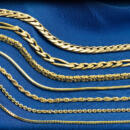
Types of Necklace Chains
… use of metal. So, you can have a big chain look without a big chain price. This is a very nice feature to have when gold prices are high. The only downside is that this style isn’t quite as strong as a traditional cable chain of the same… types of slide pendants work well with omega chains. PROS Style – Like the herringbone, omega chains show a lot of gold and create a big, impressive look. Strength – Among flat style chains, omegas are one of the strongest designs. CONS …
-
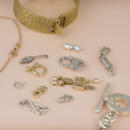
Types of Jewelry Clasps
… by ancient Egyptians and is the oldest known clasp style. This type of clasp was often made from softer metals like gold or copper and used to fasten necklaces and bracelets. The hook-and-eye clasp was also used by the Greeks and Romans … by virtue of the strength of the wire to hold its curved shape alone. S hooks usually work best in higher karat gold (21k and higher) because they are more malleable and don’t get brittle over time as easily. Unsurprisingly, one common …
-
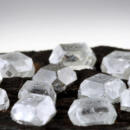
Is a Lab Grown Diamond Right for Me?
…, and a proven track record of incredible prices. P. S. If you are considering a lab grown diamond, be sure to checkout Balance , our own collection of unique engagement rings made exclusively with lab
-
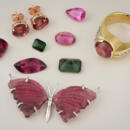
Gem in the Spotlight: Tourmaline
… the power to grant enlightenment, give power over spiritual affairs, reconcile opposites, and change base metals to gold. Tourmaline has a special place in our hearts as California natives because it is one of the few gems that are found…
-
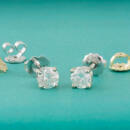
Styles of Earring Backs
… put in and take out. CONS Losing an Earring – The backless style is not as secure as lever backs or other similar styles Irritant – If used with costume jewelry made of non-precious metals, it may cause irritation to sensitive skin. Gold options found on more valuable jewelry do not typically have this problem. Lever Backs (European Backs) Lever backs, sometimes called European backs, have a curved ear wire instead of a straight post, and have a hinged lever piece that…
-
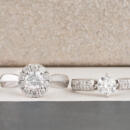
Anatomy of a Ring
… add or remove metal from the bottom of the shank when sizing a ring. This can sometimes be done so well that you would never know it was sized looking at the shank with your naked eye. Over time, the shank can wear thin—yes, even gold and platinum can wear away. In such cases a jeweler can “re-shank” the ring by replacing the metal at the bottom of the shank, going as far up the sides as the design and the extent of the wear require. If you are careful with your rings…